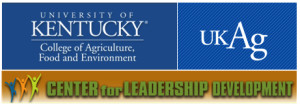 This is AWESOME: a free NGO Capacity Assessment Tool. It can be used to identify an NGO’s or a nonprofit’s strengths and weaknesses and help to establish a unified, coherent vision of what a mission-based organization can be. The tool provides a step-by-step way to map where an organization is and can help those working with the agency or program, including consultants, board members, employees, volunteers, clients, and others, to decide which functional areas need to be strengthened and how to go about to strengthen them.
This is AWESOME: a free NGO Capacity Assessment Tool. It can be used to identify an NGO’s or a nonprofit’s strengths and weaknesses and help to establish a unified, coherent vision of what a mission-based organization can be. The tool provides a step-by-step way to map where an organization is and can help those working with the agency or program, including consultants, board members, employees, volunteers, clients, and others, to decide which functional areas need to be strengthened and how to go about to strengthen them.
Sharing the results of using this tool in funding proposals and even on your web site can demonstrate to donors and potential donors the capabilities of your organization.
The tool was compiled by Europe Foundation (EPF) in the country of Georgia, and is based on various resources, including USAID – an NGO Capacity Assessment Supporting Tool from USAID (2000), the NGO Sustainability Index 2004-2008, the Civil Society Index (2009) from CIVICUS, and Peace Corps/Slovakia NGO Characteristics Assessment for Recommended Development (NGO CARD) 1996-1997.
EPF also hosts a clinic to support NGOs and the Georgian civil society sector, on the first Friday of the month from 3 to 5 p.m., and has a grants program for NGO initiatives in Georgia.
Also see:
- Basic Fund-Raising for Small NGOs in the Developing World, a guide I developed a decade ago and regularly updated until October 2015.
- Starting a Nonprofit or Non-Governmental Organization (NGO). This page offers the general advice that is applicable to any country, but you will still have to go through country-specific requirements, which are NOT detailed on this page but there is advice on where to find them).
- A comprehensive list of questions to answer in preparation for reporting to donors, the media & general public. I developed this with a colleague in Afghanistan, to help the local staff at the government ministry where we worked know what information donors and UN agencies regularly asked for, and what we anticipated they might start asking for; what subjects the media regularly asked about or reported on, and what we anticipated they might start asking about or reporting on; and what information could be used for evaluation purposes later. It was part of our many efforts to build public sector staff communications capacities in countries where I’ve served.
- Survival Strategies for Nonprofits , a guide for nonprofits facing critical budget shortfalls.





